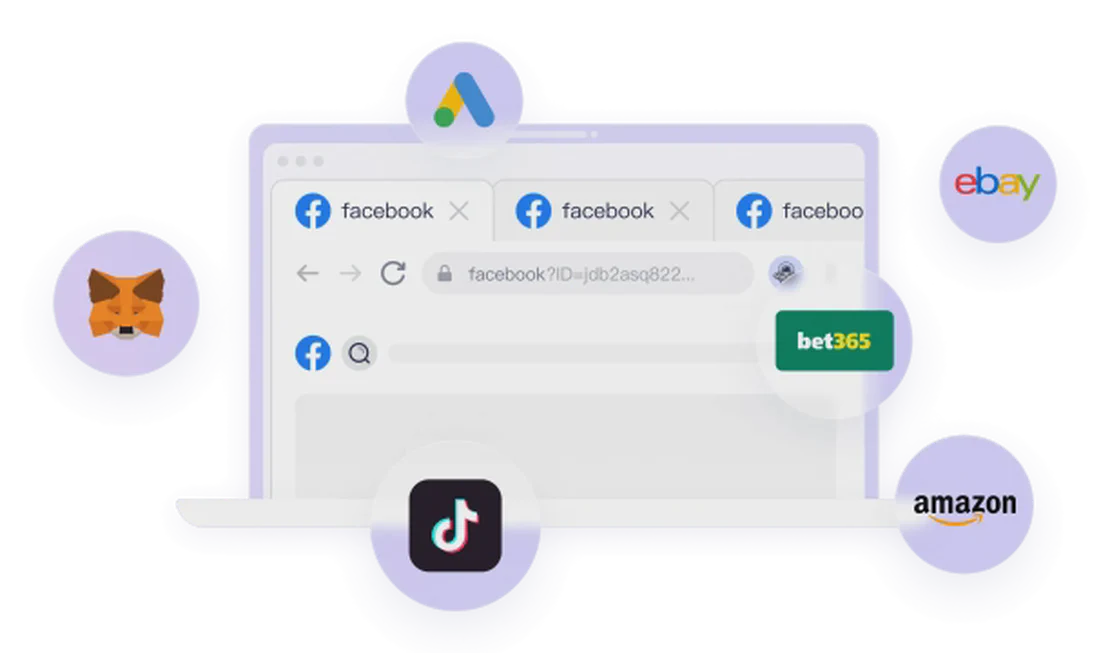Between January 2019 and December 2024, a single one of a successful blogger’s blogs made $5 million. Hard to believe, and certainly not typical. But more importantly, the strategy that blogger would use to launch and run it today is vastly different from six years ago. So much has changed—the rise of AI, Google’s algorithm updates, shifts in affiliate marketing, and the evolution of SEO.
For anyone just starting out and dreaming of going from zero to $10k a month from a blog, the first step is to forget those outdated “SEO myths.” The future’s top bloggers won’t be the best “Google gamers,” but the smartest operators of a personal brand and multi-channel traffic system. This article reveals the complete strategy a successful blogger would adopt in 2025—a blueprint that transforms a blog from a digital island into a business command center.

The Core Mindset Revolution: Upgrade Your Blog from “Info Hub” to “Sales Portal”
In the past, people talked about blogging in terms of “SEO rankings,” “keyword density,” and “backlinks.” They viewed their blog as a “content farm” dependent on Google for sustenance, hoping to land on the first page to get traffic and then earn pennies through affiliate links and AdSense. But the times have changed.
In 2025, a successful blogger treats their blog like a “Sales Portal,” not an isolated “SEO content island.”
What does this mean? The blog is no longer the only source of content; it is the central data hub and final conversion destination of their entire personal brand. Imagine a solar system: the blog is the sun, and the YouTube channel, Instagram account, Pinterest page, and even TikTok are the planets orbiting around it. They attract the gravity (traffic), and then stabilize it, directing it toward the core star—the blog—where trust is built, value is delivered, and the final commercial transaction occurs.
The key to success is no longer owning a website that “waits for Google to throw you a scrap of food.” It’s about building a powerful system composed of the creator (a unique personal brand), multiple content formats, and diversified income streams. This personal-branding, multi-channel, product-driven approach is the true highway to $10k/month and beyond.
The Diversified Income Matrix: How to Go from 0 to $10k a Month
An experienced blogger provides the most direct look at a harsh reality: relying on a single income source, especially Google ads and low-commission affiliate marketing, is incredibly inefficient and fraught with risk.
It’s essential to reassess the “passivity level” and “time-to-reach” for different income streams. Here’s a comparison of the core models:
- Affiliate Marketing: Medium passivity (7/10), but it requires a massive amount of traffic and relentless content updates. To reach $10k/month, one might need 40,000 visitors and 200 sales a month. In today’s hyper-competitive environment, this is incredibly difficult.
- Ad Revenue: High passivity, but the barrier to entry is the highest. To make a significant income (e.g., $10k/month), one would need 1 million monthly visits. This is no longer a blog; it’s a small media empire.
- Sponsorships: Low passivity (4/10), it requires maintaining relationships and a brand image, and again, substantial traffic as a prerequisite.
- Courses & Coaching: While seemingly low passivity (3/10), it is by far the most efficient and fastest path to high income. The math is simple:
- To earn $10k through affiliate marketing, one needs 200 sales of a $50 product.
- To earn $10k through coaching, one only needs 2 clients paying $5,000 each.
- To earn $10k through a course, one only needs 10 students paying $1,000 each.
See the stark contrast? This reveals a fundamental truth: Instead of racking one’s brain on how to get 100 readers to click an affiliate link, the focus should be on providing high-value, high-priced coaching or a carefully crafted course to just 2-3 clients.
This is a shift from a “selling products” mindset to a “selling solutions” mindset. The blog and all its content should have one primary goal: not to sell other people’s products, but to build the credibility and traffic funnel that makes one’s own courses and coaching services stand out.

Building Your Traffic Moat: The “Why” and “How” of a Secondary Traffic Source
The most disruptive idea presented is this: one can never, ever pin all their hopes on Google. Google’s algorithm is fickle; one “Helpful Content Update” can decimate a site’s traffic overnight. In 2025, relying on a single, unstable, and uncontrollable traffic source is commercial suicide.
Therefore, creating a “second traffic curve” is crucial. This choice should be based on the niche and the creator’s personality:
- Knowledge-based niches (Fitness, Finance, Tech): YouTube is the best choice. Users here have a strong willingness to learn, and the conversion rate for paid products (courses, coaching) is far higher than on a blog.
- Visual-based niches (Fashion, Home, Food): Instagram and Pinterest can help quickly build a stylized brand identity and drive direct traffic through stunning images/videos.
- Any niche requiring in-depth explanation: Newsletters (the email list) are the most valuable, private asset. Directing all traffic from every channel to the email list creates a “closed-loop” asset that is immune to algorithm changes.
The core of this strategy is: Direct traffic from a public platform (like Google or YouTube) into the creator’s private assets (the blog and email list), and then use those assets to complete the final conversion. The blog is the “hub” of this strategic loop.
The True Power of AI: An Efficiency Multiplier and Paradigm Shifter
In this entire model, AI’s role is that of a “super assistant,” not a “replacement.” It is used to compress what used to take 3 months into a 3-day process, but strategic judgment and the creator’s unique insight are still paramount.
AI for Strategic Planning: By using the Claude/ChatGPT prompt frameworks provided, one can efficiently complete (for free):
- Niche & Sub-Niche Research: Input “yoga,” and AI can generate 5 sub-niches (e.g., yoga for beginners, prenatal yoga, restorative yoga) and 20 initial article topic ideas.
- Keyword & Content Outline Generation: Input “best yoga blocks for beginners,” and AI can create an SEO-friendly article structure, H1/H2/H3 headings, and a draft introduction and conclusion.
AI for Content Creation:
- Draft Writing: AI can quickly fill in the “flesh” of the article based on the outline.
- The Golden Rule: AI creates the skeleton; the creator fills in the soul. The creator must be the teacher, not just an information copier. It’s essential to inject one’s own stories, genuine product experience, authentic emotions, and authority. AI cannot build trust; only the creator can.
- Humanize the Content: Use a first-person narrative, share struggles and victories; replace AI’s generic language; add the creator’s unique perspective and empathy.
The Scalability Bottleneck: When a Personal Brand Needs an “Avatar”?
When the blog, YouTube channel, and social media are all on track, a creator may face an advanced challenge: how can one scale a personal brand matrix without risking personal privacy, account associations, and platform bans?
Imagine deciding to create a new Instagram account for the blog’s behind-the-scenes content, plus a separate fan interaction account for the YouTube channel. If they are all operated on the same phone or browser, these accounts will appear “related” to the platform’s algorithms. Their IP addresses, device fingerprints, and usage habits are identical.
This is where FlashID Anti-Detect Browser comes into play. The creator is not a superhero with multiple “clones”; they are a founder who needs to protect their digital identity. With FlashID, a separate, clean online environment can be created for every “sub-brand” of the business—whether it’s the main blog account, a secondary fashion-focused Instagram, or an account for interacting deeply with students in a course community.
Each environment has its own unique IP, browser fingerprint, and cookies. This means:
- The main brand blog can be operated in a FlashID environment based in the US.
- In another, the Instagram account can be managed.
- In a third, a student community’s interactions can be overseen.
This level of digital isolation not only allows for the safe and compliant management of multiple accounts, mitigating the risk of throttling or bans due to “association,” but more importantly, it liberates operational efficiency. Different content strategies can be tested and data can be collected across different environments without interference. When a personal brand needs to “bloom in multiple places,” FlashID is the most solid and secure digital foundation one can have.

Frequently Asked Questions (FAQ)
Q: I’m not an “expert” at all. Can I still succeed?
A: Absolutely. A successful model emphasizes that one doesn’t need to be a “master”; the job is to be the “guide.” It’s only necessary to be a step or two ahead of readers (who are mostly beginners). Documenting the learning process and sharing failures and successes is incredibly valuable in itself.
Q: What niche should I choose for my blog?
A: Choose a niche with at least a genuine interest and a willingness to spend time learning. Combine this with the platforms where that audience is most active. For example, the fitness niche is better suited for YouTube, while fashion is better for Instagram/Pinterest. Interest will carry one through the toughest initial phases.
Q: Will my AI-written content be penalized by Google?
A: “Pure AI spam” will be penalized. But as long as one adheres to the principle of “AI for the first draft, the creator fills the soul,” and performs extensive fact-checking, personalized edits, and adds their own perspective, the content is high-quality. Google penalizes for poor content quality, not the AI tools themselves.
Q: Should I wait until I have traffic to start my own products?
A: It’s not recommended. The best time is now. All content should be planned around a “future product” from the very beginning. This creates a strong connection between the content and the final offer, making the future product highly relevant and persuasive.
Q: How long does it take to build a “secondary traffic channel”?
A: It depends on time and effort. It usually takes 3-6 months to see initial results. The key is consistency. Even if one can only spend 2-3 hours a week, it’s crucial to be consistent in publishing content and engaging with the audience.
Q: Do I have to personally run my blog and social media forever?
A: Not necessarily. Once the business is on solid ground, outsourcing can be considered. For example, a virtual assistant can be hired to manage social media, or a freelance writer can be paid to create blog posts based on provided keywords and ideas. The rise of AI has significantly lowered the cost of outsourcing.
Q: Why does a successful model discourage only doing services (like consulting)?
A: Service is a time-for-money trade, so income has a ceiling. Once one has their own digital product (course, ebook), they can “work once, sell many times,” truly scaling income and removing their own time as the limiting factor.
Q: Do I need to form a US company to sell courses?
A: Not necessarily. For international course platforms like Teachable or Kajabi, one can register with their personal identity to receive payments. If the course is primarily for a domestic audience in China, platforms within the WeChat ecosystem or Zhihu can be chosen. The key is delivering value, not the corporate structure.
Q: How do I balance informational content (80%) and affiliate content (20%)?
A: First, think about the problems readers will encounter on their journey and create 80% of high-quality, free “informational” content to solve those problems and earn their trust. Then, within this valuable content, plant the 20% of “transactional” content (like product reviews) for those readers who are ready to buy. This is a strategy, not a rigid rule.
Q: If my Google traffic crashes, will my world collapse?
A: If one has a blog “designed for a personal brand” with YouTube, an email list, and other traffic sources, the answer is “no.” Google is just one of the many planets. Even if it encounters a problem, the entire system can continue to run smoothly. A famous blogger is a perfect example: their Google traffic is already low, but they still make $65,000 a month, thanks to other stable channels and their own products.
You May Also Like
